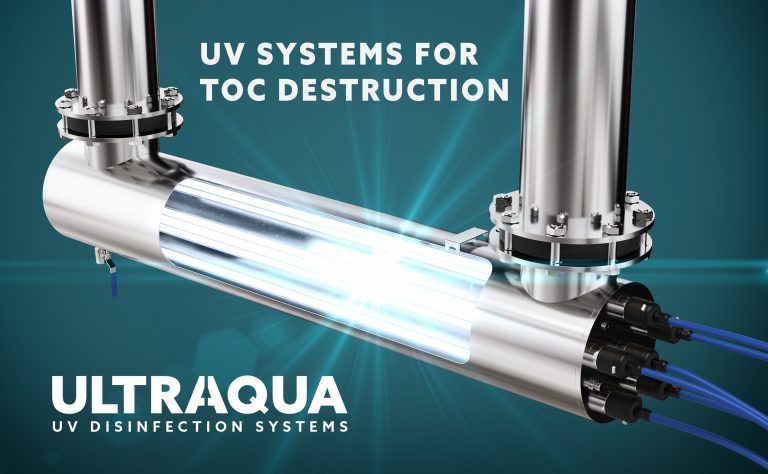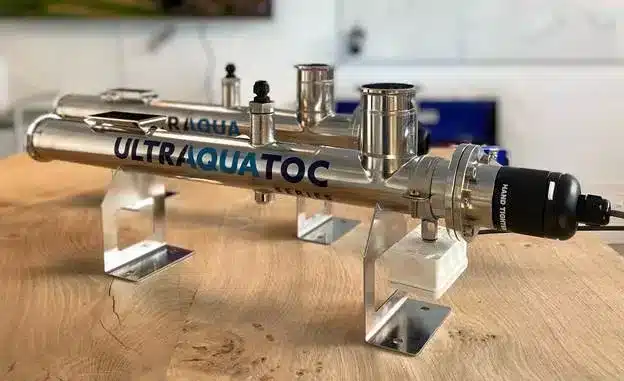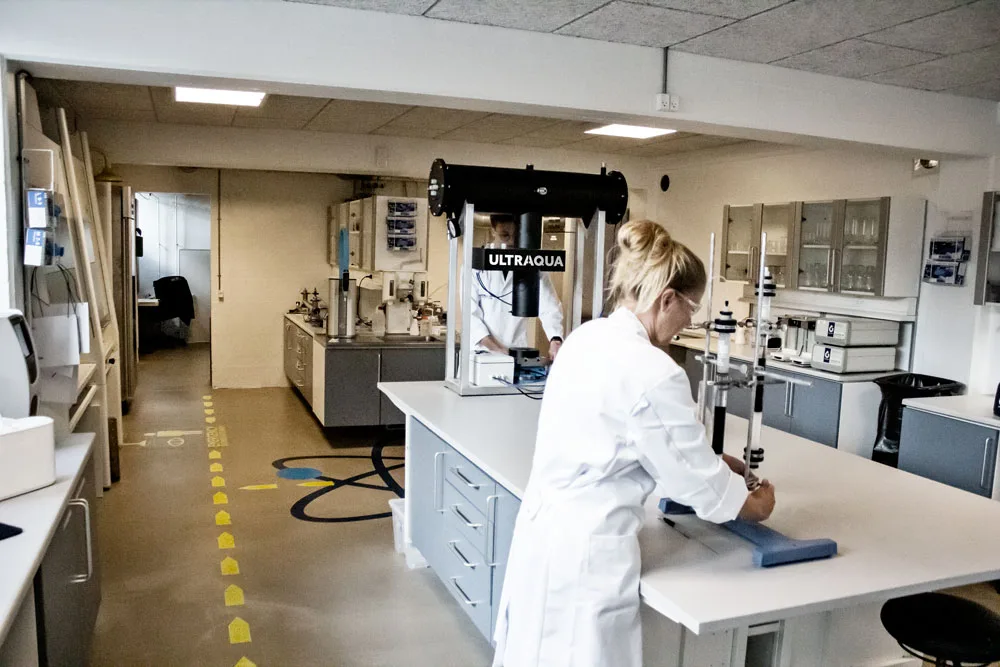How to Reduce Total Organic Carbon (TOC) for Water Treatment
27 February 2023TOC is short for Total Organic Carbon, which within water treatment is referring to the total amount of organic carbon found in water.
The reduction of Total Organic Carbon (TOC) in water is critical in applications such as microelectronics and semiconductors, pharmaceutical, food and beverage, and processing wastewater, to ensure ultrapure water.
The risks of not reducing TOC in purified water
Lacking to live up to the high standards for consistent water purity in the applications mentioned above can have significant consequences. In order to live up to these high water-quality demands, an important part of the process is to look into the total amount of organic carbon found in the water.
This is for instance topical in food and beverage production processes, where ultra-pure water has a vital impact on the shelf life and overall quality of the products. In these environments, even the smallest of contaminants can have a major negative impact leading to significant economic losses. This makes it a necessity to have continuous availability of high-quality water, to ensure consistent product quality and reliability. This makes it essential to measure the amount of total organic carbon found in the water in these applications, to assess whether the water is safe to use.
Another example is the pharmaceutical industry which has exceptionally high requirements for sanitation, making it necessary to ensure a trustworthy and consistent source of ultra-pure water.
This calls for solutions which can effectively ensure TOC reduction – a problem which can be solved through the utilization of UV technology.
“Differently from Europe, the electronics and semiconductor industries play an important role in ASEAN’s economic development. Customers in such industries always highly demand ultra-purified water (UPW) to facilitate the production of their valued products. UV technology is needed not only for effective disinfection, but also TOC removal as well. ULTRAAQUA has quickly become recognized in the Asian market as a competitive manufacturer of effective TOC removal solutions regarding life cycle cost.”
Wachira Pintong, Nam Solutions and Technologies Co., LTD.
Reducing Total Organic Carbon (TOC) in water
Reducing TOC in water requires the use of a higher UV energy level, which is created at 185nm wavelength. The TOC reduction systems from ULTRAAQUA use UV lamps that emit light at this wavelength, with light energy that promotes the formation of OH-radicals from the photolysis of water. The OH-radicals react with the organic matter in the water leading to the oxidation into CO2 (carbon dioxide) and H2O (water), effectively resulting in the removal of TOC.

These UV TOC reactors are optimized through a combined chemical process and CFD modeling approach, attaining industry leading standards. See the TOC UV system series by clicking here.
For additional improved efficiency, the ULTRAAQUA UV TOC systems can be combined with the addition of other oxidants such as hydrogen peroxide and ozone.
TOC Removal water treatment case
As a part of an R&D project concerning producing ultrapure water from tap water, ULTRAAQUA has built a complete water treatment plant for the production of highly purified water for a small pharmaceutical company in Denmark.
The design parameters are as follows:
- Flowrate 0.5m³/h
- UVT: >98%
- Inlet TOC 200-800µg/L
The specified requirements are to maintain TOC below 500µg/L as per the US Pharmacopeia.
The water treatment plant is comprised of softening, RO, a small new TOC system, as well as mixed bed ion exchange. The TOC UV system is placed in a circulation loop where the water is continuously circulated from a buffer tank through the UV system, to the consumption locations in the product, and back to the tank. The TOC unit delivers a 185nm dose of 10mJ/cm² with a TOC removal per pass of around 20%.

Several TOC degradation experiments have been conducted with online TOC monitoring using the UV/Persulfate technique, where the decline of TOC in the buffer tank has been measured. To understand the observed degradation, a comprehensive TOC degradation model has been built in COMSOL Multiphysics, where the system is modeled as two compartments, where the degradation in the TOC-UV unit is described in one compartment, and the dilution in the tank is described in the other, with the water being circulated between the two compartments.
Feel free to check this TOC reduction case out as well, carried out for a semiconductor factory in Israel.
How to achieve the desired TOC reduction level
By measuring the total organic carbon found in a specific water sample and comparing it to the desired TOC level improvements to be made, we are able to find the optimal UV system to reach the desired TOC reduction levels.
Sending the TOC water sample to the ULTRAAQUA laboratory
Firstly, we will need to receive a TOC water sample for our laboratory technicians to analyze. The water sample is carefully handled by our specialists throughout the entire testing process.
If plastic containers are used for shipping, they should be made of HDPE (high density polyethylene) material and kept as cold as possible during storage and transportation. We also suggest that a TOC analysis of the sampled water is done before shipping, to assess any changes prior to the lab testing.

The analytical methods for TOC analysis
In our laboratory, we use two different analytical instruments for measuring total organic carbon in the water samples. They rely on the following principles:
Instrument #1
The first instrument relies on wet chemical UV-persulfate oxidation with conductivity detection. The wet-chemical oxidation with UV light and persulfate is especially used with purified water and ultrapure water applications, widely spread and accepted as “the standard.” Organic carbon is oxidized to CO2 by persulfate in the presence of UV light through the generation of OH radicals.
The CO2 produced is separated from the liquid stream by a membrane that allows the specific passage of CO2 to high-purity water where a change in conductivity is measured and related to the CO2 passing the membrane. The UV–persulfate chemical oxidation method offers relatively low maintenance, high sensitivity method for a wide range of applications due to the large operational range of less than 1 part per billion (ppb) to more than 100 parts per million (ppm) with high accuracy.
Instrument #2
The second instrument relies on thermal decomposition with NDIR detection. With TOC measurement using thermal decomposition, the organic matter is oxidized into carbon dioxide using very high temperatures (650-950°C) and a catalyst. In this way, the undissolved components (suspended solids or wear debris) are also completely decomposed.
This is a common method particularly with a high TOC load (e.g., municipal sewage). Detection is done using a nondispersive infrared detector where the CO2 produced is swept into the detector by a CO2-free carrier gas.
If you are interested in hearing more about how we can help with TOC removal, you are always welcome to reach out to our sales engineers at sales@ultraaqua.com – or use the contact formula below.